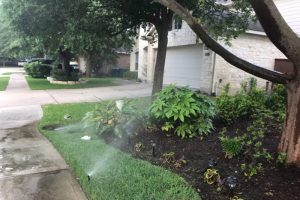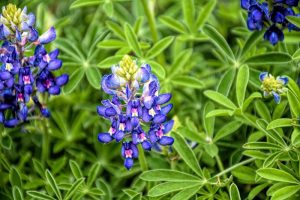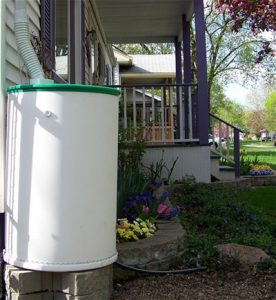6 Ways to Conserve Water (and Still Have a Thriving Yard)
July 30, 2019
Every drop counts when you’re conserving water. Saving water not only helps out your bank account, it’s also environmentally friendly and lowers the demand on the water supply. That doesn’t mean you’re stuck with a dead, brown yard. Quite the contrary — your yard can be the envy of the neighborhood with these six tips to conserve water.
Drought-Tolerant Grass
A lawn that can withstand a dry, hot season is the kind of grass that will help you conserve water now, and in the long run. In the Southern half of the U.S., look no farther than Phoenix for the type of grass you should plant. Bermudagrass and midiron are two varieties recommended for that desert climate, where summer temps reach into the triple digits with only about 8 inches of rain a year. St Augustine grass is another warm-season variety that’s drought resistant. Among cool-season grasses, Kentucky bluegrass and fine fescue are drought-tolerant.

Native Plants
The lowest maintenance plants and flowers for your yard are the plants and flowers native to your area. They evolved to survive and thrive in the local environment. Native flora will need less of a helping hand — and less water — from you. The good news is that North America is home to more than 18,000 plant species — and it’s pretty easy to look up which ones will thrive in your yard. Still not sure? Head to a local gardening store or county extension service where they can answer your questions.
Drip Irrigation
Drip irrigation delivers water directly to the roots of your lawn and garden. There is less evaporation, so you use less water. You can also install a drip irrigation system on your own if you’re looking for a weekend project, or you can call in the pros. Either way, it’s an investment that will pay for itself over time.
Smart Sprinkling
If you want to stick with your sprinkler, there are some tricks that will save you water. A lot of it is common sense:
● Position your sprinkler heads so you aren’t watering the sidewalk.
● Don’t water right before, during, or after a rainstorm.
● If you have an automatic sprinkler system, install rain or moisture sensors.
● Water in the early morning, and don’t water on windy days when most the H2O will be carried away from your lawn and plants.

Rain barrels
Harvest the rainfall with rain barrels. You can collect and store roof runoff with anything from a simple barrel to a pressurized system complete with cisterns. Either way, it’s free water and many cities and counties will distribute rain barrels or give you a rebate for buying one. Check with your city hall or county government for details.
Graywater
Graywater is about as appetizing as it sounds. But it helps you cut down on your water usage by recycling the water you use for household chores and cleaning. A graywater system collects water used in sinks, showers, bathtubs and washing machines and distributes it outdoors, in your backyard or wherever you direct it. As long as the water has not been in contact with pathogens or feces, it should be perfectly safe and Earth-friendly to use in your yard.
The keys to conserving water and keeping your yard green are plants that don’t wilt at the first sign of drought and using water efficiently. Human demand for freshwater supplies is growing. It’s easy to forget that much of the world’s water, like oceans, isn’t suitable for consumption by land plants or humans. But you can help by reducing your own demand on the water supply — and still have the yard of your dreams.
Jack Malone is a farmer and freelance writer who prides himself being eco-friendly. He enjoys finding new ways to practice green-farming with no chemicals. This post originally appeared in E, The Environmental Magazine.
